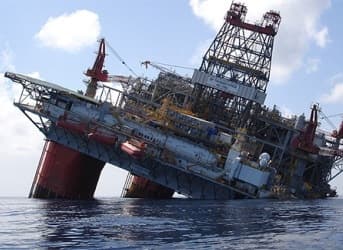June 1 marked the start of the Atlantic hurricane season. When Hurricane Katrina hit in 2005, more than half the oil production in the Gulf of Mexico was shut down. If something like that happened again this year, fracking would go a long way toward keeping that kind of crisis at bay.
U.S. gasoline prices increased 17 percent from when Katrina formed at the end of August to when it dissipated a week or so later. In today's dollars, the peak would translate to $3.86 per gallon, roughly 20 cents higher than the current national average price for a gallon of regular unleaded gasoline.
Over the past 10 years, an average of three hurricanes have been categorized as major storms. But that categorization doesn’t account for the devastating effects that high winds can have on the nation's energy sector.
2012’s Hurricane Sandy actually began as a relatively minor hurricane, but wound up morphing into an 1,100-mile super storm that left more than 8 million people without power in the northeastern U.S. Though gas prices nationally held relatively stable, most retail stations in New Jersey ran out of gas entirely.
Last year was already the quietest hurricane season in the last 20 years and this year should be relatively inactive, according to scientists at the National Oceanic and Atmospheric Administration (NOAA).
But weather forecasting isn't an exact science, and NOAA's predictions leave a 30 percent margin of error.
Related Article: The Questionable Staying Power Of The U.S. Shale Boom
As of June 3, one of the first major storms of this season, Tropical Storm Boris, was headed toward Salina Cruz, home to a Mexican oil refinery that can process as much as 330,000 barrels of crude oil per day (bpd). Moving at 5 mph, it was inching slowly toward the same installations that were hammered by Hurricane Katrina.
An active hurricane season would cause a "noticeable" impact on energy markets, according to the U.S. Energy Department. Most consumers are already paying high energy and gasoline bills, so devastating storms could cause real price pain.
Except that this year, U.S. energy officials say the domestic shale oil boom would help mitigate any storm-related problems.
The usual impact hurricanes have on U.S. oil and natural gas production has been reduced because the country’s biggest shale oil operations – in places like Pennsylvania and North Dakota – are well out of reach of such storms.
Fracking has its critics, to be sure, but the next time a super storm hits, the protection it offers to consumers might end up winning some people over.
By Daniel J. Graeber of Oilprice.com

















